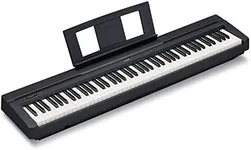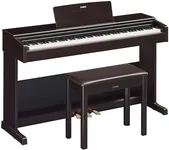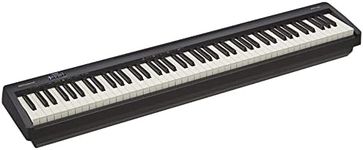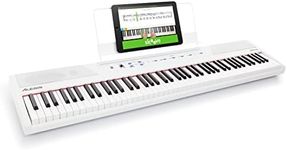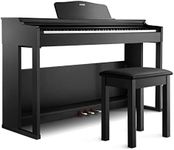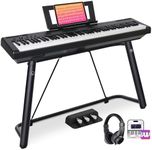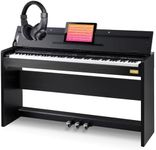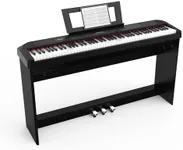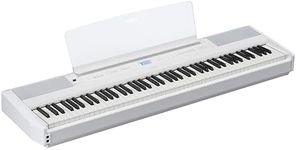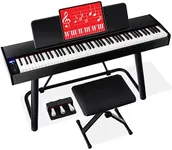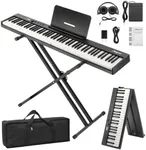Buying Guide for the Best Budget 88 Keys Keyboard
Choosing the right 88-keys keyboard can be a rewarding experience, especially if you know what to look for. Whether you're a beginner or an experienced player, understanding the key specifications will help you find a keyboard that suits your needs and enhances your playing experience. Here are some key specs to consider when selecting an 88-keys keyboard and how to navigate them.Key ActionKey action refers to how the keys feel when you press them. This is important because it affects your playing comfort and technique. Key actions can be divided into three main types: weighted, semi-weighted, and unweighted. Weighted keys mimic the feel of an acoustic piano and are ideal for classical and serious piano players. Semi-weighted keys offer a balance between the feel of weighted keys and the lightness of unweighted keys, making them suitable for a variety of playing styles. Unweighted keys are lighter and more responsive, which can be great for beginners or those who play fast-paced music. Choose the key action that best matches your playing style and comfort.
Sound QualitySound quality is crucial as it determines how realistic and pleasing the keyboard sounds. This spec is influenced by the quality of the built-in speakers and the sound engine. High-quality sound engines produce more realistic and dynamic sounds, which can enhance your playing experience. When evaluating sound quality, listen for clarity, richness, and the ability to produce a wide range of tones. If possible, try out different keyboards to see which one sounds best to you. If you plan to use the keyboard for performances or recordings, prioritize higher sound quality.
PolyphonyPolyphony refers to the number of individual notes a keyboard can produce at the same time. This is important for playing complex pieces of music that require multiple notes to be sustained simultaneously. Keyboards typically offer polyphony ranging from 32 to 256 notes. For beginners or casual players, 64-note polyphony is usually sufficient. Intermediate and advanced players, especially those who use the sustain pedal frequently or play intricate compositions, should look for keyboards with at least 128-note polyphony to avoid note dropouts.
ConnectivityConnectivity options determine how you can connect your keyboard to other devices, such as computers, audio interfaces, or external speakers. Common connectivity options include USB, MIDI, and audio outputs. USB and MIDI connections are essential for recording music or using music production software. Audio outputs allow you to connect to external speakers or amplifiers for better sound projection. Consider your needs for recording, performing, or practicing when evaluating connectivity options. Ensure the keyboard has the necessary ports to connect to your preferred devices.
PortabilityPortability is a key factor if you plan to move your keyboard frequently, whether for gigs, lessons, or practice sessions. This spec is influenced by the keyboard's weight and size. Lighter and more compact keyboards are easier to transport but may sacrifice some features or build quality. Heavier keyboards often offer better build quality and more features but can be cumbersome to move. Consider how often you will need to transport the keyboard and choose one that balances portability with the features you need.
Built-in FeaturesBuilt-in features such as metronomes, recording capabilities, and learning tools can enhance your practice and playing experience. Metronomes help you keep time, recording features allow you to capture your performances, and learning tools can provide guided lessons and exercises. Evaluate which features are important to you based on your skill level and practice habits. Beginners might benefit from keyboards with more learning tools, while advanced players might prioritize recording capabilities and other advanced features.
